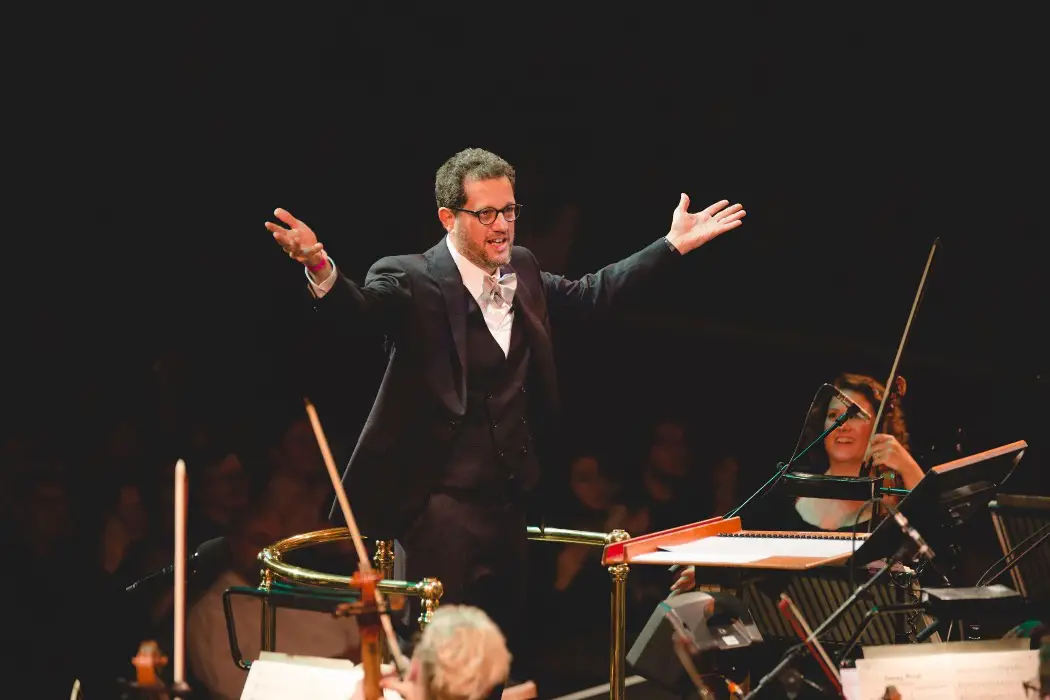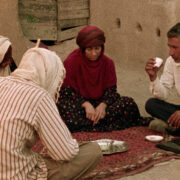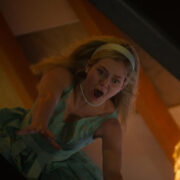The Beginner’s Guide: Michael Giacchino, Composer

Tom is a recent graduate based in the UK, who…
When people think of film composers, discussions tend to centre around the “classic” composers – John Williams, Ennio Morricone, Hans Zimmer. Yet like any canon, to limit discussion to typical icons is to do a disservice to the topic, and by engaging only with auteur composers, a greater landscape of blockbuster composers is forgotten.
Michael Giacchino is one of these composers, one of the most prolific film composers still regularly working. Giacchino, alongside Thomas Newman, Ramin Djawadi and several other composers, represents a large body of modern cinematic scores that are as musically nuanced and artistically valid as the typical canon composers.
His work, including the scores to Jurassic World, the rebooted Star Trek films, several Marvel films (Doctor Strange, Spider Man: Homecoming) and many other well-known blockbusters, displays many traits of artistic adaptation, particularly the former two examples and his work for Rogue One: A Star Wars Story, with themes adapted or inspired from previous scores.
Genre Adaptation: The Road to Film
Giacchino’s scoring began not on films, but for video games. Working for Disney Interactive he wrote the scores to several games, most notably games in the Medal of Honor franchise and several Jurassic Park properties.
Video games have a notably different requirements for music than film. Composer Aaron Copland once wrote five important tasks for film music, including “Underpinning the theatrical build-up of a scene, and rounding it off with a sense of finality,” and “Building a sense of continuity”. In a game, when theatrical actions can occur at a point that the composer can’t predict, and in a scene which could last two minutes or several hours, depending on the actions of a player, simply writing a series of themes and variations isn’t enough – background filler is just as important as significant themes.
A result of this need to balance the “filler” pieces with important themes is that Michael Giacchino’s scores have a natural ebb and flow, almost like the sea – at significant moments of a film they can be momentous, at other times they hide in the underflow.
Giacchino also worked on T.V. shows, notably J.J. Abrams’ Lost and Alias. Particularly in the former, his work has the intent to create a haunting or strange ambience. The Lost soundtrack tends to be rather minimalist, with many scenes of silence juxtaposing the intense roaring of others. Series theme ‘Life and Death’ is a perfect example of this – it is a simplistic and melancholy piano and violin arrangement, which contrasts dramatically with the haunting roar of each episode’s title card. The use of contrasts is one of Giacchino’s favoured musical elements.
https://www.youtube.com/watch?v=twHXrNtG-7c
The early works of Giacchino’s career undoubtedly had a formative effect on his work, and the particular musical elements necessitated from the genre and mediums he began with have a notable effect on his film work – particularly in the way he adapts and interprets other themes.
Passing the Baton: Adaptation and Interpretation
Many of the Giacchino’s films are sequels to works with popular themes – he has worked on franchises like Star Wars, Mission Impossible and Star Trek. In each soundtrack, it can be seen that he makes the important editorial decision to keep or omit particular themes, to leave his mark on the film or build on someone else’s signature.
The score to Mission Impossible – Ghost Protocol plays close homage to Lalo Schifrin’s iconic original theme, with Giacchino noting the need to adapt Schifrin’s jazz theme into a modern blockbuster theme. The resulting piece ‘Light the Fuse’ has instrumentation; light hi-hat taps, and brass countermelodies, and structure. It resembles a typical jazz structure, with unified heads punctuating the piece, in common with jazz music, yet is still clearly a serious and sombre blockbuster theme.
Likewise in Rogue One: A Star Wars Story, particular themes from the original films are re-incorporated into the score. One example includes ‘Trust Goes Both Ways’ which contains the theme ‘Binary Sunset’ from the original Star Wars. Yet the prelude to the theme is ambling and much longer than the theme itself, which quickly descends into a syncopated semi-cadence. In doing so Michael Giacchino subverts the beloved theme, declaring that his score would not simply be an ode to John Williams’ iconic score but an entity of itself.
On other occasions, Michael Giacchino can be seen doing away with well-known themes altogether. His work on the rebooted Star Trek films, particularly Star Trek Beyond, forgets completely the T.V. show’s theme in favour of Giacchino’s own.
Jerry Goldsmith’s original, ‘Life is a Dream’, the theme of the shows, features proud, Copland-esque brass marches and sweeping violin harmonies. Star Trek Beyond ends with ‘Star Trek Main Theme’, Giacchino’s response to the original theme, but replaces the brass melody and violin harmonies with a string melody and choral harmonies. The resulting theme replaces the military tone, which reflected the colonialist subtext of the show, with a haunting and nuanced theme, that perhaps reflects modern views on the ideologies at play in the franchise, and echoes the emptiness of space.
It’s clear that Michael Giacchino is not afraid to do what he likes to a score in order to make it his own. In some cases he faithfully adapts themes, such as Ghost Protocol’s ‘Light the Fuse’, while in others he throws them out the window, as with Star Trek. And in many cases, his work reflects a modern interpretation of the original text – in particular, with the modern Jurassic World.
Case Study: Jurassic Park to Jurassic World
Adapting and re-using John Williams’ iconic score for Jurassic Park must have been a hard task for Michael Giacchino, but the way he avoided simply re-using the previous score, and the interesting ways he adapted that old score, show an apt awareness of the changing cinematic and tonal focuses of the films.
The Brontosaur in the room when discussing the score to the films is the use of the theme in both films, the iconic motif that many consider one of Williams’ classics.
Whilst this leitmotif is recurring throughout both Park and World, Giacchino’s most significant reincorporation of the theme is in his piece ‘Welcome to Jurassic World’, which is largely an exposition of the theme in the same way Williams’ ‘Theme from Jurassic Park’ was for the original.
The original features melody from the woodwind section of the orchestra and a drone harmony from strings, lacing the melody, which evokes “awesome beauty and sublimity of the dinosaurs in nature” as Williams described it, with a dreamlike and angelic aura from the string accompaniment. Giacchino’s rendition gives the melody to horns – strong, powerful, and bold. Yet, this overtly bold and heroic motif is alienated by its contrast to later pieces, where the reassuring strength of the horns is lost, replaced by the eerie woodwind scuttle of ‘Indominus Wrecks’ or the brass melody’s almost expressionist leaping in ‘Gyrosphere of Influence’.
The use of woodwind as a mysterious and unnatural force in pieces like ‘The Dimorphodon Shuffle’ contrast Williams’ use of the instruments to present re-assuring and magical themes regarding the dinosaurs – in World, the dinosaurs are purely to be feared. If Jurassic Park, with its woodwind and restrained melodies, represented nature and the natural order of life, Jurassic World, with its powerful brass and haunting silences, represents man’s failed attempts to interfere with this order. This fits with the narratives of the films – the former sees dinosaurs as mystical beings that have their power, the power taken by the meteor, restored – the latter sees man trying and failing to utilise that power.
Near the end of his score Michael Giacchino laments on this. ‘The Park is Closed’ is a piano redux of the original theme, taking the usually magnificent score and scraping it down to its bare bones to expose it, slowly building up the composition, adding strings and then horns. He ends the piece on a hopeful note – man’s nature won’t end in disaster, just as the dinosaurs evidently didn’t.
A notable absence in the score to Jurassic World is Jurassic Park’s secondary theme, exposed in ‘Journey to the Island’ when the heroes are flying over the park. (1:31)
Williams described this as an “adventure theme, high-spirited and brassy, thrilling and upbeat musically”. In this theme, the composer is at his most Giacchino-esque – brass is used to indicate excitement, adventure, and hope at the experiences one will have of the park. Yet even through the piece woodwind creeps in, slowly the brass drops out, the woodwind begins playing the melody, brass begins playing countermelodies, even strings take their turn in charge. As the heroes enter the park itself, Williams’ themes of sublimity and wonder replace the overt adventure and excitement.
Giacchino doesn’t reprise this theme, which emphasises the brutal contrasts in his work from wonder to horror. This is in keeping with the tones of the film – whilst in Jurassic Park an individual human was the main antagonist, and the many dinosaurs that plagued the heroes were just following their instincts, in Jurassic World an individual dinosaur was the main antagonist, and the woes caused by it were the result of the meddling of many humans.
The actions of the dinosaurs in Jurassic Park straddle horror and wonder, the horrifying nature of them evoking wonder that these beasts even exist. Yet, the man-made Indominus Rex in Jurassic World has no nature, and the stark changes in tone from horrifying to wonderful reflect this uncertain and undefinable nature.
The way Michael Giacchino adapts and changes the classic score of Jurassic Park to completely alter and alienate its message show a deft compositional hand – not only are parts adapted and altered between instruments but an iconic theme is removed, and the tones of the pieces are all but completely stripped and rebuilt to reflect the new film and its values. The film’s shirking of notions of fantasy and excitement, and its new mantle of horror and fear, are reflected boldly in the score.
Michael Giacchino’s Music: Conclusion
There are several notable elements to the way Giacchino adapts other scores. His use of contrasts is far more notable than in the works of other composers, and creates stark tones in his pieces. Likewise the way he adapts common themes but changes the instrumentation, which changes the themes and tones significantly, shows him exercising his creative license to alter previous work to fit the tone of his overall movements.
It’s rare that composers adapt themes and pieces wholesale, but Michael Giacchino’s bold steps to make everything he composes personal makes him stand out as one of contemporary cinema’s leading composers.
Do you think it right to adapt scores for newer films, or should the original score be honored?
Does content like this matter to you?
Become a Member and support film journalism. Unlock access to all of Film Inquiry`s great articles. Join a community of like-minded readers who are passionate about cinema - get access to our private members Network, give back to independent filmmakers, and more.
Tom is a recent graduate based in the UK, who writes about films and games, and makes a few of his own. If he's not watching a film, playing a game or writing a script - don't worry! - he's probably just gone to make a cup of tea. He's never far from a screen.













